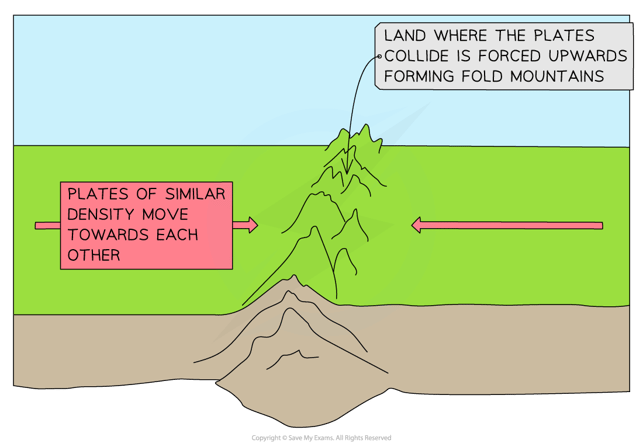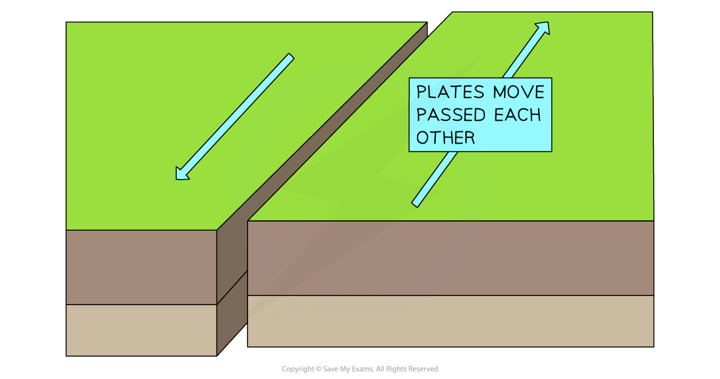Key Elements of Tectonic Theory
Earth’s structure
- The Earth has three main layers:
- The crust
- The mantle
- The core
Crust
- There are two types of crust:
- Continental - a thicker (45-50km), less dense layer (mostly granite)
- Oceanic - a thinner (6-10km), denser layer (mostly basalt)
- The crust consists of seven major and several minor tectonic plates
- The Mohorovičić discontinuity - is the boundary between the crust and the mantle is also known as Moho
Mantle
- The mantle is between the crust and core and is the widest layer
- The upper mantle has two layers:
- The rigid layer above the asthenosphere, which together with the crust, makes up the lithosphere
- The asthenosphere is a semi-molten, plastic type layer, which moves under high pressure
- The lower mantle is hotter and denser than the upper mantle
- The intense pressure, at depth, keeps the lower mantle solid
- The upper mantle has two layers:
Core
- The core is made up of two parts:
- Inner Core - solid centre, mostly composed of iron
- Outer core - semi-molten, mostly liquid iron and nickel

Earth's structure
- The tectonic plates move slowly over the asthenosphere
Development of plate tectonic theory

The development of plate tectonic theory
- Scientists agree that the plates move, but there is still debate over the mechanisms that cause the movement
Mantle convection
- In the past, the theory of convection currents was used on its own to explain tectonic plate movement
- The heat from radioactive decay in the core moves upwards into the mantle
- It creates convection currents, which push up into the spreading mid-ocean ridges, forcing them further apart called the ridge push

Convection currents in the mantle
- Other processes are now recognised as being important in plate movement
Seafloor spreading
- Palaeomagnetism provides evidence that the sea floor has gradually moved apart at a mid-ocean ridge
- Lava cools and solidifies with the minerals lining up with the magnetic field
- The direction of the minerals on either side is a mirror image

Seafloor spreading and palaeomagnetism
Subduction and slab pull
- Convection currents in the mantle drag the overlying lithosphere towards each other
- A subduction zone is formed when two plates meet
- The heavier, denser plate subducts under the lighter, less dense plate
- As oceanic crust cools, it becomes denser and thicker, and gravity forces the lithosphere down into the subduction zone
- As it sinks, it drags or pulls the plate with it
- This is known as slab pull
Worked example
What is the process of slab pull?
[1 Mark]
| A. |
At constructive plate boundaries, convection currents cause plates to pull apart. This generates both seismic and volcanic activity |
| B. |
At conservative plate margins, plates are pulled alongside each other. This generates seismic activity after a period of pressure build-up |
| C. |
At destructive margins gravity forces the lithosphere to descend into the mantle. The collision with the other plate causes both shallow and deep seismic activity |
| D. |
At constructive plate margins, plates are pulled apart leading to the formation of rift valleys. These valleys continue to widen and generate significant seismic activity |
Answer:
- C - At destructive margins gravity forces the lithosphere to descend into the mantle. The collision with the other plate causes both shallow and deep seismic activity (1)
Exam Tip
There are problems with these plate movement ideas.
There is no simple alternating pattern of new plate ridges and subduction zones, where plate is made and then destroyed around the globe.
For instance:
- Iceland is a hotspot on a divergent plate boundary:
- One half of the island is on the North American plate and the other half is part of the Eurasian plate.





